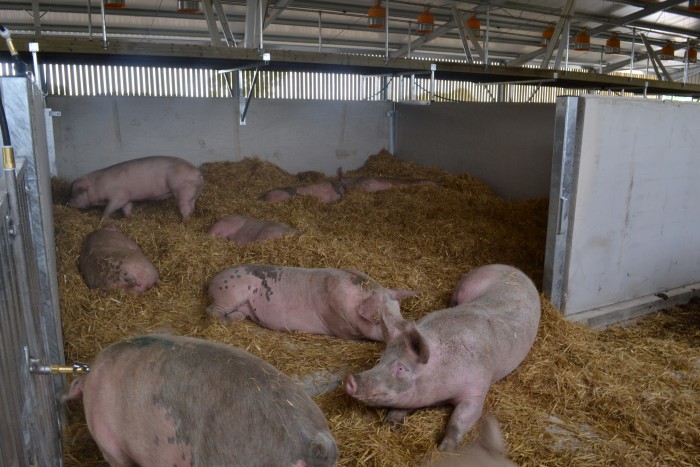Pig producers will receive £250 for sows or gilts slaughtered as TB reactors, after the NPA insisted the meagre payments initially proposed were too low.
Defra introduced new legislation on January 2 formalising TB compensation rates in England for various non-bovine species, also including camelids, deer, goats and sheep. For pigs compulsorily slaughtered as TB reactors or TB affected animals, the rates are:
- £250 for a breeding female (gilt or sow)
- £350 for a breeding male
- £30 for a suckler (a pig weighing under 25kg)
- £40 for a weaner (a pig weighing from 25kg to 35kg)
- £90 for a grower or finisher (a pig weighing over 35kg)
The new rates follow a consultation last year into proposals to bring bTB regulations for pigs and other non-bovines into line with those in place for cattle. Defra was originally proposing to pay just £75 for sows and £100 for gilts, but accepted the need for higher rates after the NPA highlighted in its response to the consultation why these figures would significantly undervalue stock.
The NPA has also been trying to get the message across to Defra for some time that its approach to bTB in pigs will often place a disproportionate burden on producers. Because there is no reliable test for TB in pigs, when a positive is found at slaughter, herds are placed under restriction for lengthy periods, sometimes years, even though it is widely acknowledged that the risk of onward spread from pigs is low. These restrictions mean pigs can only move to specially approved holdings and are not eligible for export to China.
Testing flaws
APHA has statutory powers in England to slaughter and remove livestock of any species that test positive for TB. It also has powers to require the TB testing of all non-bovine animals.
But in new guidance on its website, Defra acknowledges that: “In species where skin testing is difficult such as pigs and park deer, the results of abattoir post-mortem examinations may be taken into consideration when APHA decide on lifting restrictions.”
NPA chief executive Zoe Davies said: “Whilst we welcome the introduction of compensation for pigs culled as a result of TB, it won’t actually benefit many producers as most cases are identified at slaughter. Some may choose to cull out in order to get restrictions lifted, but this will only work if the risk of infection from the wildlife vector is eradicated at the same time.
“Our biggest concern remains trying to ensure a proportionate risk based approach is adopted when pig producers are placed under restriction – one which accepts the low risk that TB in pigs poses and prevents unnecessary financial and regulatory burden on pig businesses.”
TB in pigs background
In the section on TB in pigs on the TB Hub, Defra states: “The oral route is considered to be the main way in which pigs can become infected. Most cases are attributed to contact with wildlife but other potential routes could be ingestion of untreated milk or milk products from infected cows or consumption of feedstuffs contaminated by wildlife.
“There is no active surveillance for TB in pigs; cases will tend to be identified at post-slaughter inspection or at post-mortem in a veterinary laboratory. TB is not considered to be particularly contagious amongst pigs or to spread easily from pigs to other animals.”




